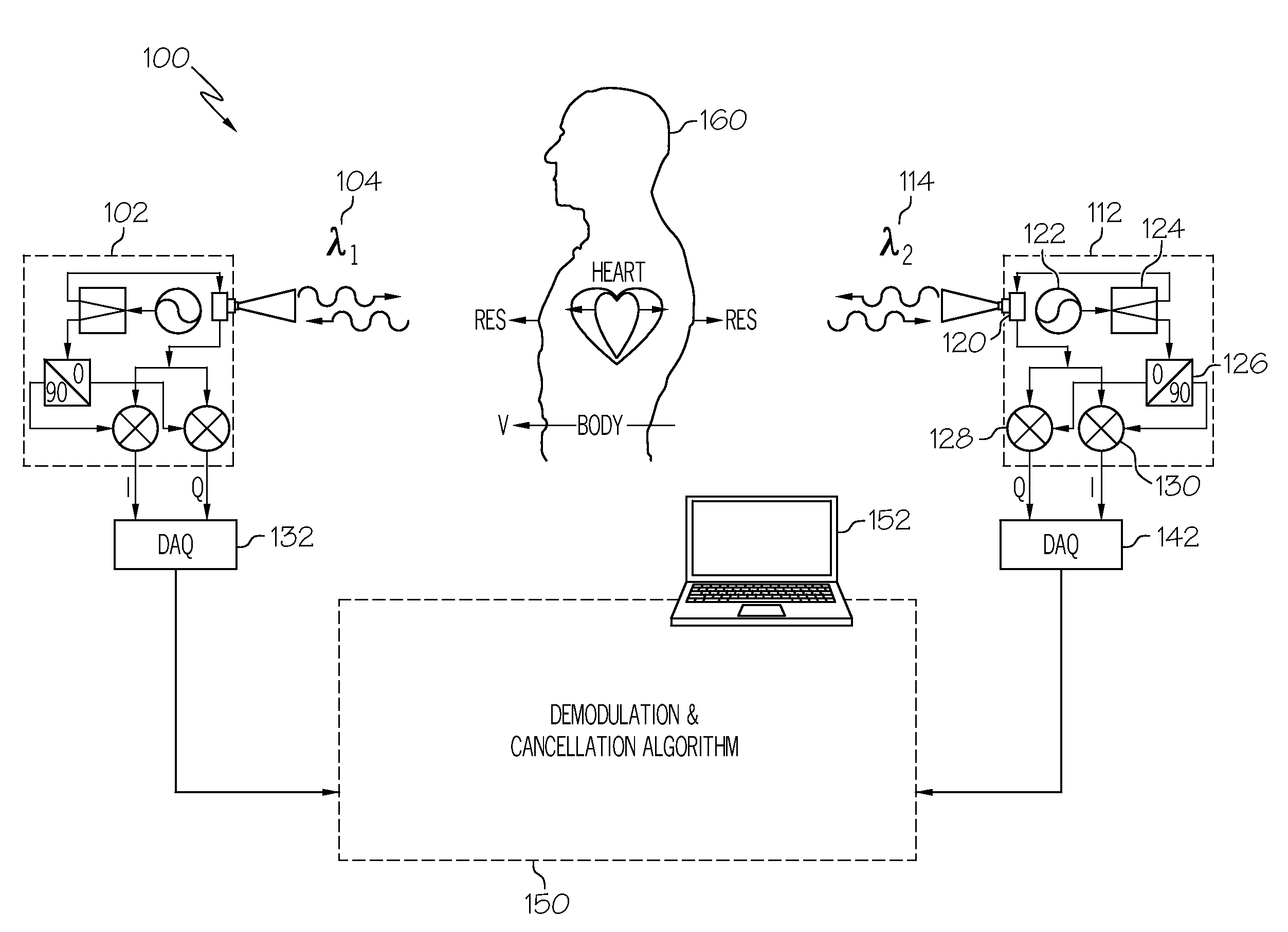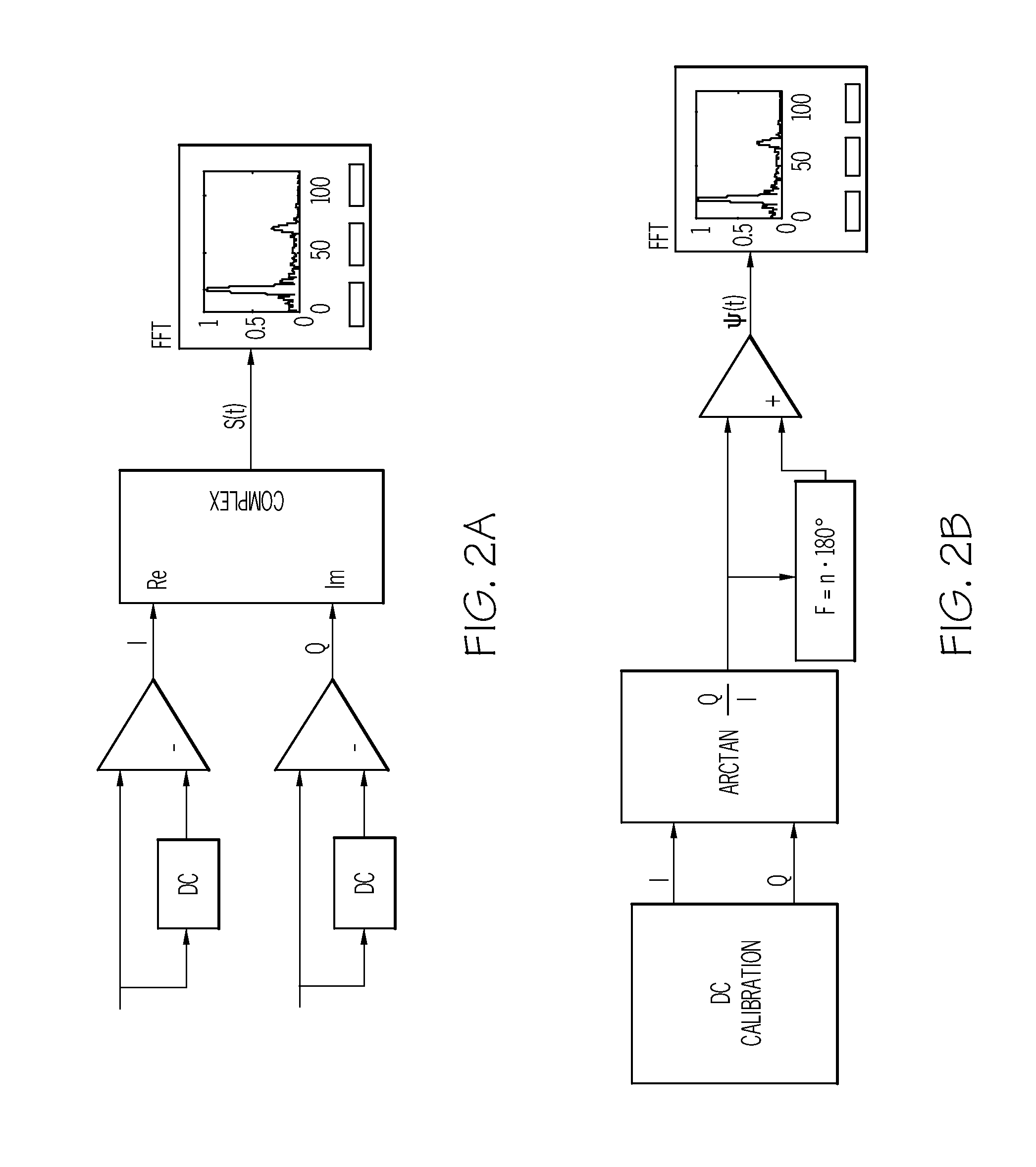Random Body Movement Cancellation for Non-Contact Vital Sign Detection
a non-contact, random body movement technology, applied in the field of non-contact monitoring, can solve the problems of limiting the application of non-contact vital sign sensors, presenting severe interference for accurate detection, and limiting the subject being monitored to remain stationary, so as to achieve accurate measurement results and cancel noise
- Summary
- Abstract
- Description
- Claims
- Application Information
AI Technical Summary
Benefits of technology
Problems solved by technology
Method used
Image
Examples
example i
5.8 GHz Quadrature Radar
[0073]Simulation results are shown in FIG. 5 for detection from the back of the human body. More specifically FIG. 5 is a graph of demodulation for a 5.8 GHz radar illustrating: (a) a signal detected at heart center (Case I) and at body center (Case II); (b) an actual received signal (Case III); (c) an angular information ψ(t) of the received signal; and (d) baseband spectra obtained by the complex signal demodulation and the arctangent demodulation (the DC component is not shown in the baseband spectrum). The residual phase produced in the electronic circuit was assumed to be 00, which means the Q channel was at the optimum detection point while the I channel was at the null detection point according to the single-beam model.
[0074]FIGS. 5(a) and (b) show the signal trajectories in the constellation graph. As predicted in Section II, signals reflected from different parts of the human body are affected by two variations: the phase offset and the radiation int...
example ii
24 GHz Quadrature Radar
[0077]In this example, the carrier frequency was 24 GHz and the residual phase produced in the electronic circuit was assumed to be 450, which means the detection was performed at the middle between the null and the optimum detection points. The constellation plots are shown in FIGS. 6(a) and (b). More specifically, FIG. 6 is a graph of demodulation for a 24 GHz radar illustrating: (a) a signal detected at heart center (Case I) and at body center (Case II); (b) an actual received signal (Case III), with the recovered angular information shown in inset; (c) a baseband spectra obtained by the complex signal demodulation and the arctangent demodulation (DC component not shown in the spectra), according to the present invention. The complex signal demodulation causes harmonic (H2) and intermodulation (Int) interference. Due to fast variation of the phase offset on the surface of the human body, more severe trajectory deformation was observed. However, angular info...
PUM
 Login to View More
Login to View More Abstract
Description
Claims
Application Information
 Login to View More
Login to View More - R&D
- Intellectual Property
- Life Sciences
- Materials
- Tech Scout
- Unparalleled Data Quality
- Higher Quality Content
- 60% Fewer Hallucinations
Browse by: Latest US Patents, China's latest patents, Technical Efficacy Thesaurus, Application Domain, Technology Topic, Popular Technical Reports.
© 2025 PatSnap. All rights reserved.Legal|Privacy policy|Modern Slavery Act Transparency Statement|Sitemap|About US| Contact US: help@patsnap.com



